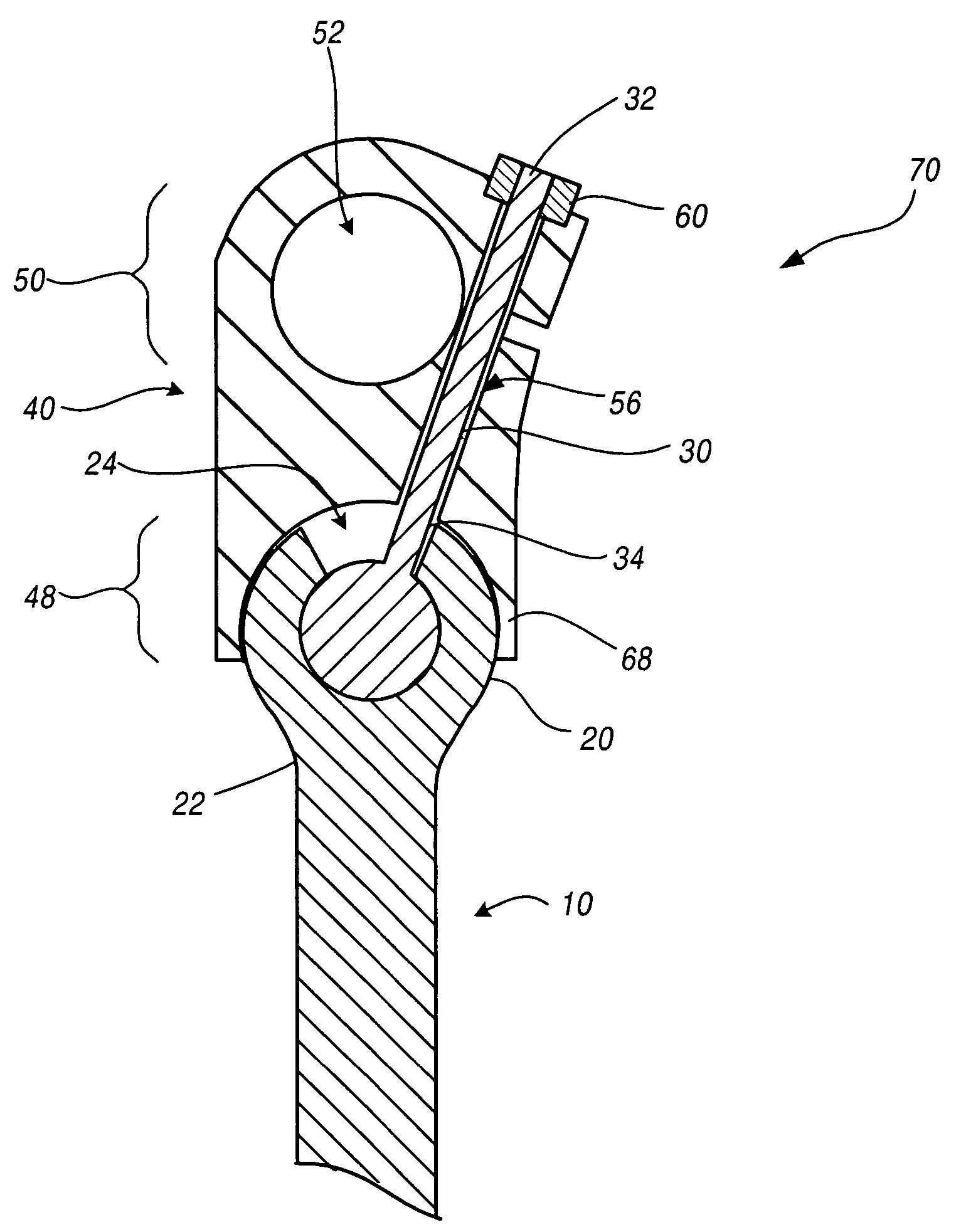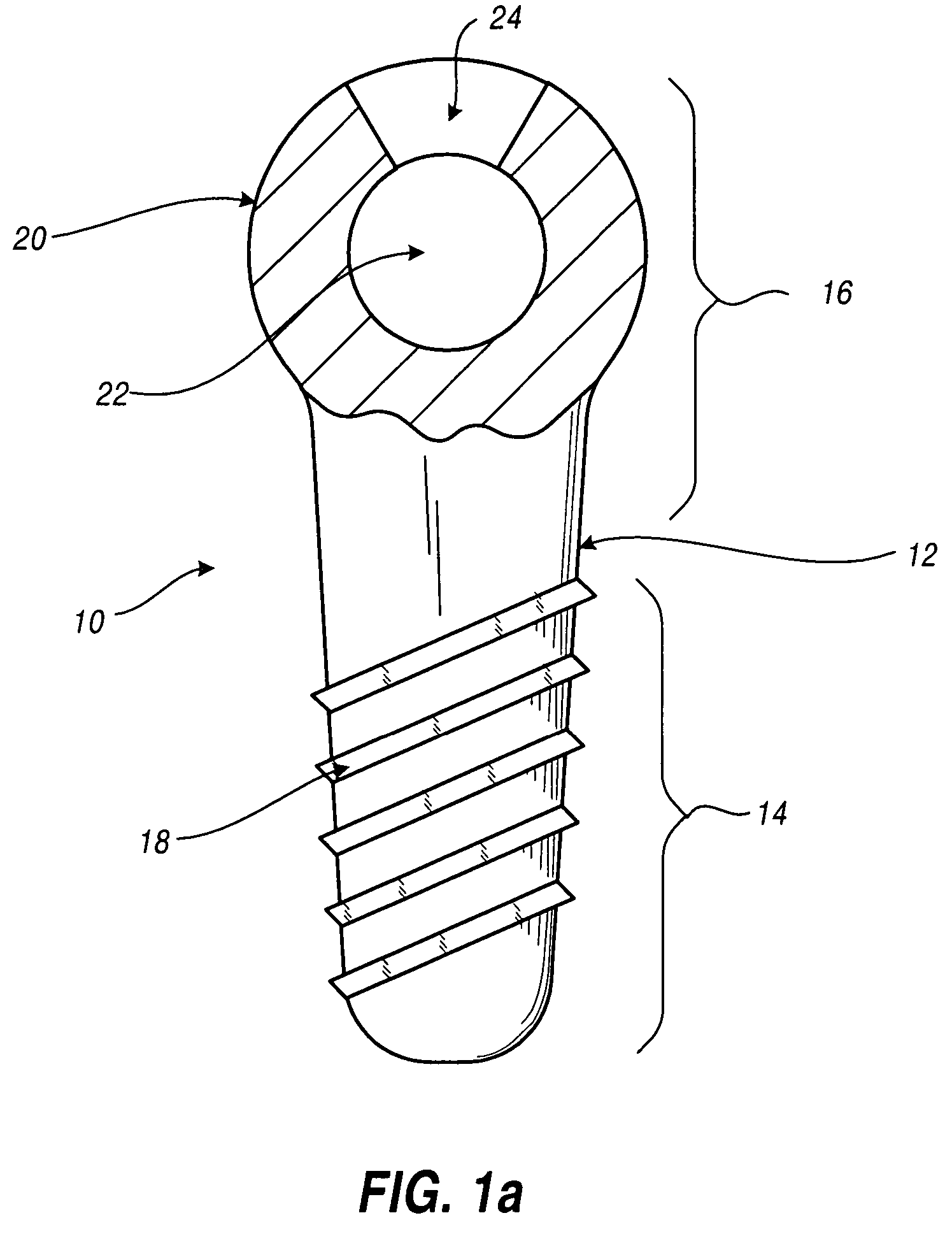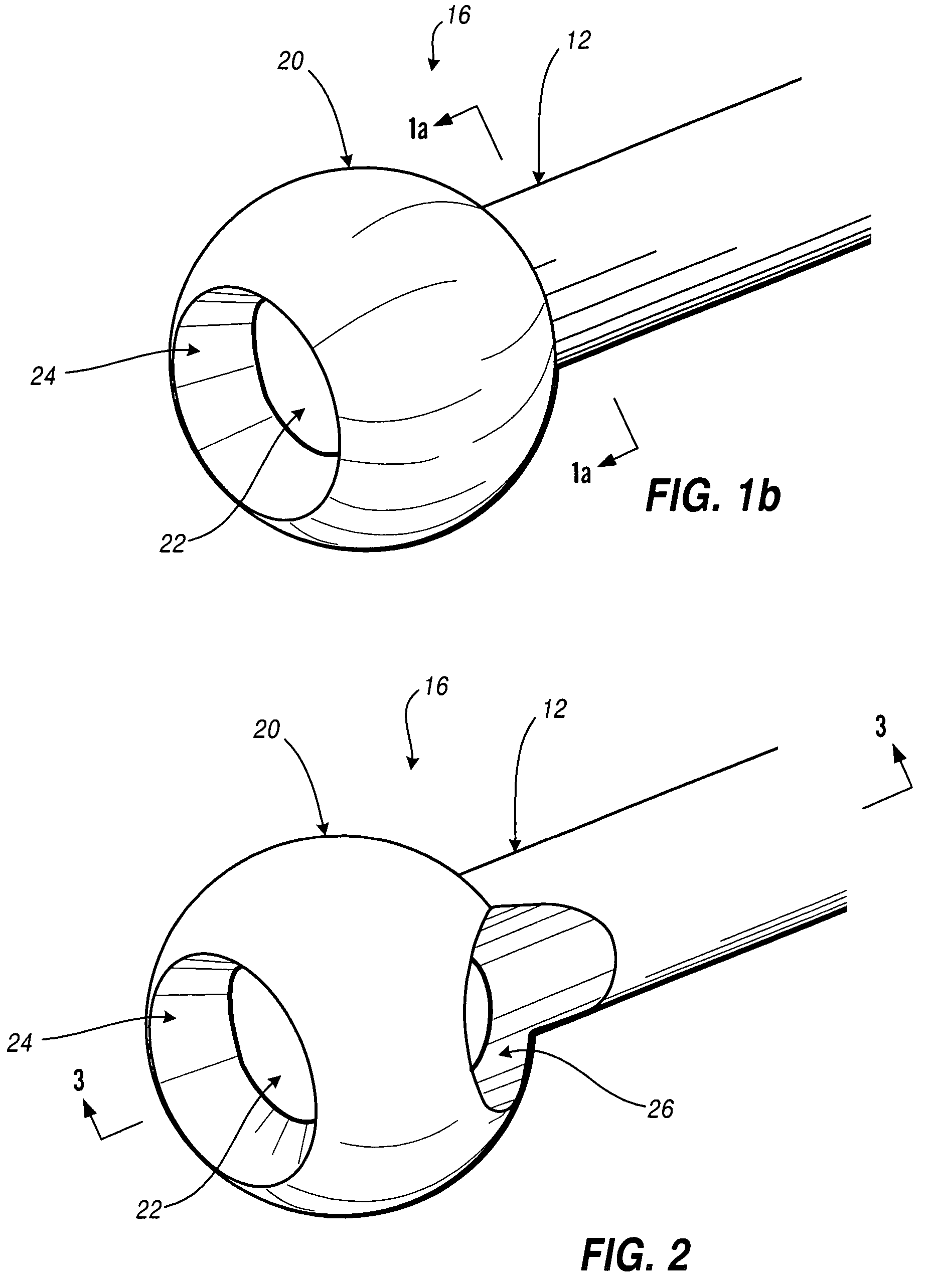Polyaxial connection device and method
a technology of polyaxial connection and connection device, which is applied in the field of polyaxial connection device, can solve the problems of unpredictability, inability to predict exact bone formation and shape within an individual patient, and difficulty in using fixed screws, so as to prevent undesirable rotation of the link, prevent rotation, and prevent undesirable rotation.
- Summary
- Abstract
- Description
- Claims
- Application Information
AI Technical Summary
Benefits of technology
Problems solved by technology
Method used
Image
Examples
Embodiment Construction
[0044]With reference to FIG. 1, one embodiment of the attachment device (or connection device) of the present invention is shown in partial cross-section. The attachment device 10 includes a shank 12 having a first end 14 and a second end 16. The first end 14 of the shank 12 includes a securement mechanism 18. As shown in FIG. 1, the securement mechanism 18 may be screw threads. It is noted, however, that the securement mechanism 18 may include any known method of securing one item to another. For example, the securement mechanism 18 may be a hook, a plate, a flange, or adhesive. In the case of the securement mechanism 18 as a flange or plate, the securement mechanism 18 may require additional hardware such as screws, bolts, or adhesive to secure the plate or flange to the intended object. In the case of the securement mechanism 18 as an adhesive, or requiring the additional use of adhesive, the adhesive would necessarily be applied to the securement mechanism 18, not included withi...
PUM
 Login to View More
Login to View More Abstract
Description
Claims
Application Information
 Login to View More
Login to View More - R&D
- Intellectual Property
- Life Sciences
- Materials
- Tech Scout
- Unparalleled Data Quality
- Higher Quality Content
- 60% Fewer Hallucinations
Browse by: Latest US Patents, China's latest patents, Technical Efficacy Thesaurus, Application Domain, Technology Topic, Popular Technical Reports.
© 2025 PatSnap. All rights reserved.Legal|Privacy policy|Modern Slavery Act Transparency Statement|Sitemap|About US| Contact US: help@patsnap.com



